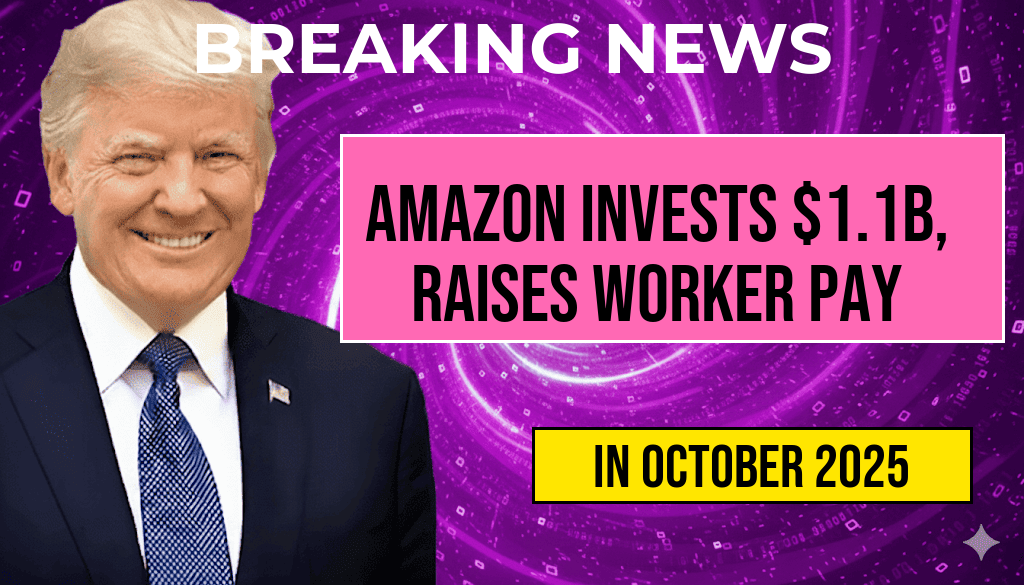Amazon has announced a significant $1.1 billion investment aimed at increasing wages for its fulfillment center workers across the United States. The move, unveiled in a company press release, is expected to elevate the average hourly pay of fulfillment employees to over $23 per hour, marking a notable shift in Amazon’s compensation strategy amid ongoing labor market tensions. This investment, which Amazon describes as part of its broader effort to support its workforce and enhance operational stability, will be distributed across numerous facilities nationwide over the coming months. As the retail giant continues to navigate an evolving economic landscape, the wage hike underscores its commitment to attracting and retaining talent in a competitive labor environment. Industry analysts highlight that this escalation in pay could influence wages across the logistics sector, prompting other employers to reassess their compensation packages.
Details of the Investment and Pay Increase
Amazon’s recent commitment involves allocating funds toward wage enhancements, employee benefits, and workplace improvements. According to company officials, the investment will directly impact thousands of fulfillment center workers, whose roles include processing, packaging, and shipping orders to consumers. The company’s internal data indicates that prior to this initiative, the average hourly pay for such roles hovered around $20, with some facilities offering lower wages depending on location.
Expected Impact on Compensation
| Region | Current Average Pay | Projected Average Pay |
|---|---|---|
| National (U.S.) | $20.00 | $23.00+ |
| West Coast | $21.50 | $24.50 |
| Midwest | $19.75 | $22.75 |
Sources familiar with Amazon’s internal calculations suggest that the wage increase will boost average pay in key regions, aligning fulfillment center wages with industry standards while also addressing worker demands for better compensation amid rising living costs.
Broader Context and Industry Response
The move by Amazon arrives amidst a broader conversation about worker compensation and labor rights within the logistics and e-commerce sectors. Over the past year, Amazon and other major employers have faced pressure from labor advocates and employees demanding higher wages and improved working conditions. In response, Amazon has periodically increased pay, but this latest $1.1 billion investment signifies a more substantial effort to stabilize its workforce and reduce turnover.
Implications for the Labor Market
Labor market experts note that Amazon’s wage boost could set a benchmark for other companies in the supply chain industry, potentially leading to increased wage pressures across warehouses and distribution centers nationwide. As Amazon’s fulfillment network continues to expand, maintaining a motivated and adequately compensated workforce becomes crucial to meeting delivery targets and customer satisfaction metrics.
Employee Benefits and Workplace Improvements
- Enhanced health insurance options
- Additional paid time off and leave policies
- Improvements in safety protocols and workplace ergonomics
- Investment in employee training programs
These initiatives complement the wage increase, reflecting Amazon’s effort to foster a more supportive working environment that appeals to current and prospective employees alike.
Reactions from Stakeholders
Workers at various fulfillment centers have expressed appreciation for the wage hike, with some noting that it offers relief amid inflationary pressures. Labor unions and advocacy groups have welcomed the move, emphasizing that fair wages are essential for sustainable employment. However, critics argue that despite the increased pay, working conditions and job security remain areas needing further improvement.
Industry and Economic Analysts’ Perspectives
Economists suggest that Amazon’s investment may influence wage-setting trends within the logistics sector, potentially prompting other large employers to follow suit. According to Wikipedia’s logistics overview, competitive wages are vital for attracting skilled workers in a tight labor market. Meanwhile, Forbes reports that Amazon’s strategic investments could also enhance operational resilience as the company continues to expand its delivery network (Forbes).
Frequently Asked Questions
What is the main purpose of Amazon’s $1.1 billion investment?
Amazon’s $1.1 billion investment aims to enhance its fulfillment operations, including increasing worker pay and improving working conditions across its facilities.
How has Amazon’s investment affected fulfillment workers’ average pay?
As a result of the investment, the average pay for fulfillment workers has increased to over $23 per hour, providing better compensation for employees.
Which areas or facilities are most impacted by this investment?
The investment primarily benefits Amazon’s fulfillment centers and warehouse workers across various regions, helping to improve wages and working conditions in these operations.
Are there any additional benefits for Amazon’s fulfillment workers besides increased pay?
Yes, the investment also supports initiatives such as improved benefits, training programs, and enhanced safety measures to better support fulfillment workers.
What is Amazon’s long-term goal with this substantial investment?
Amazon aims to strengthen its workforce, boost productivity, and maintain competitive wages to attract and retain skilled fulfillment employees in a competitive market.









